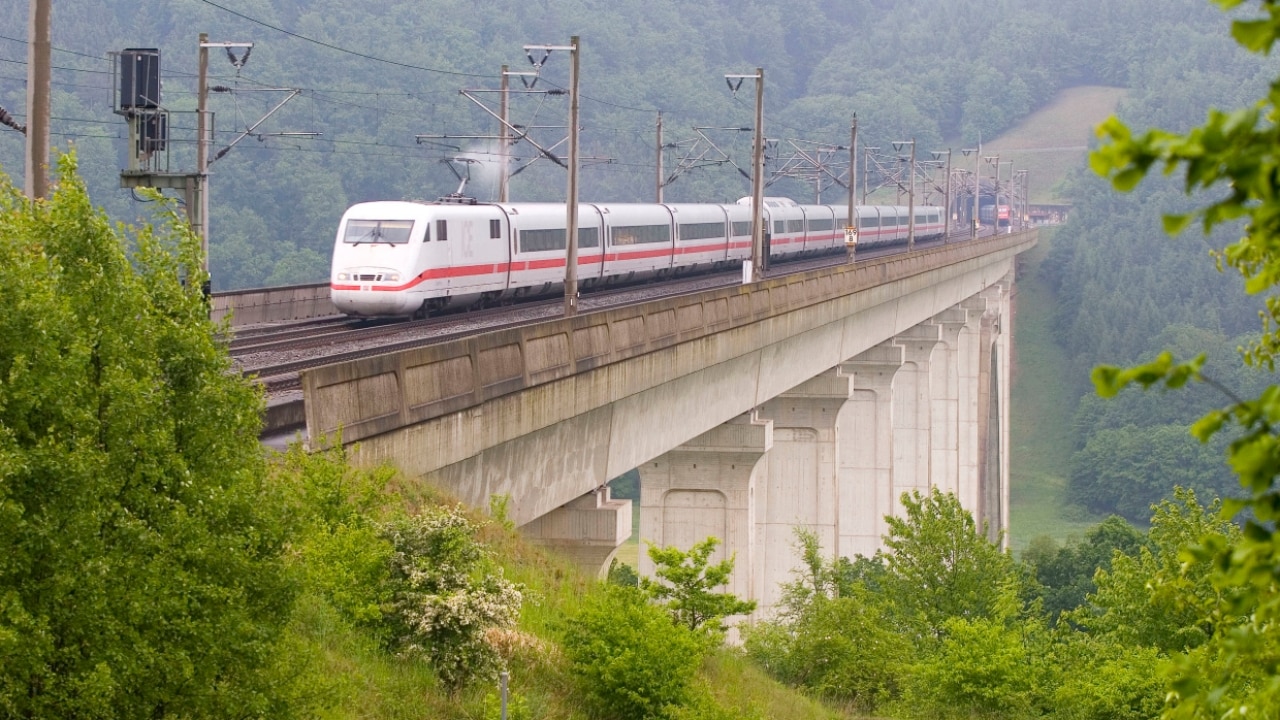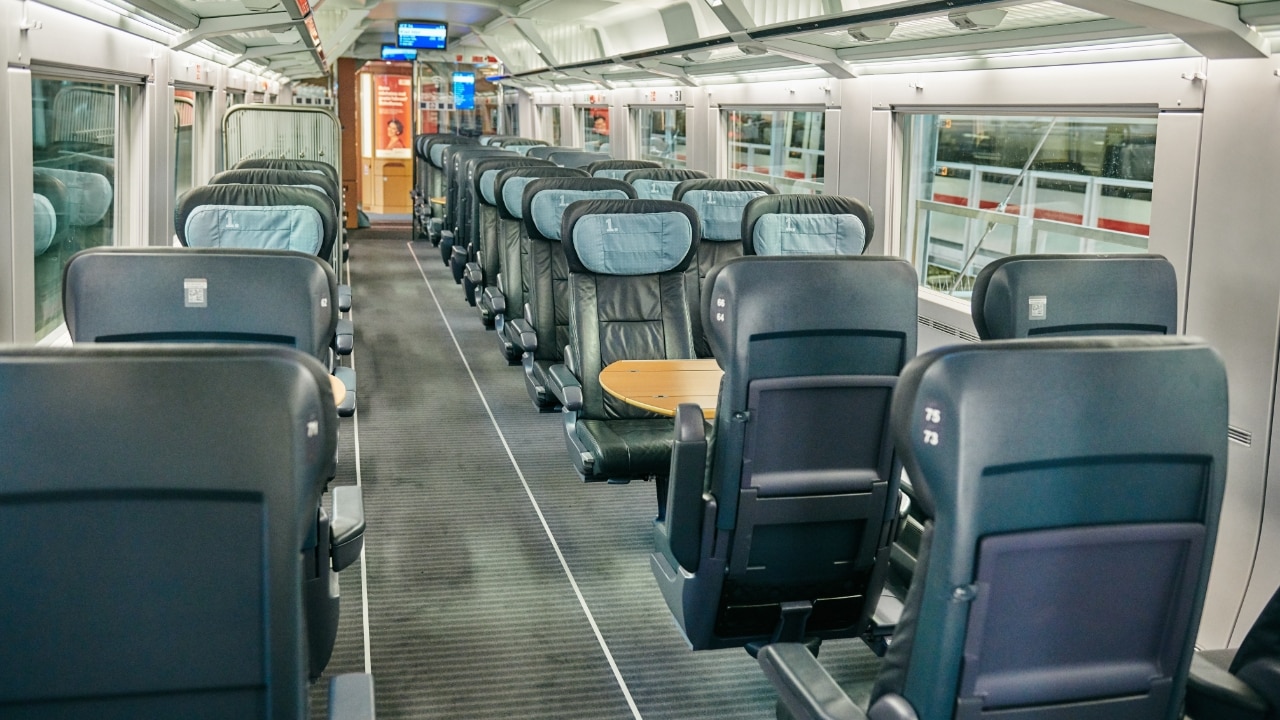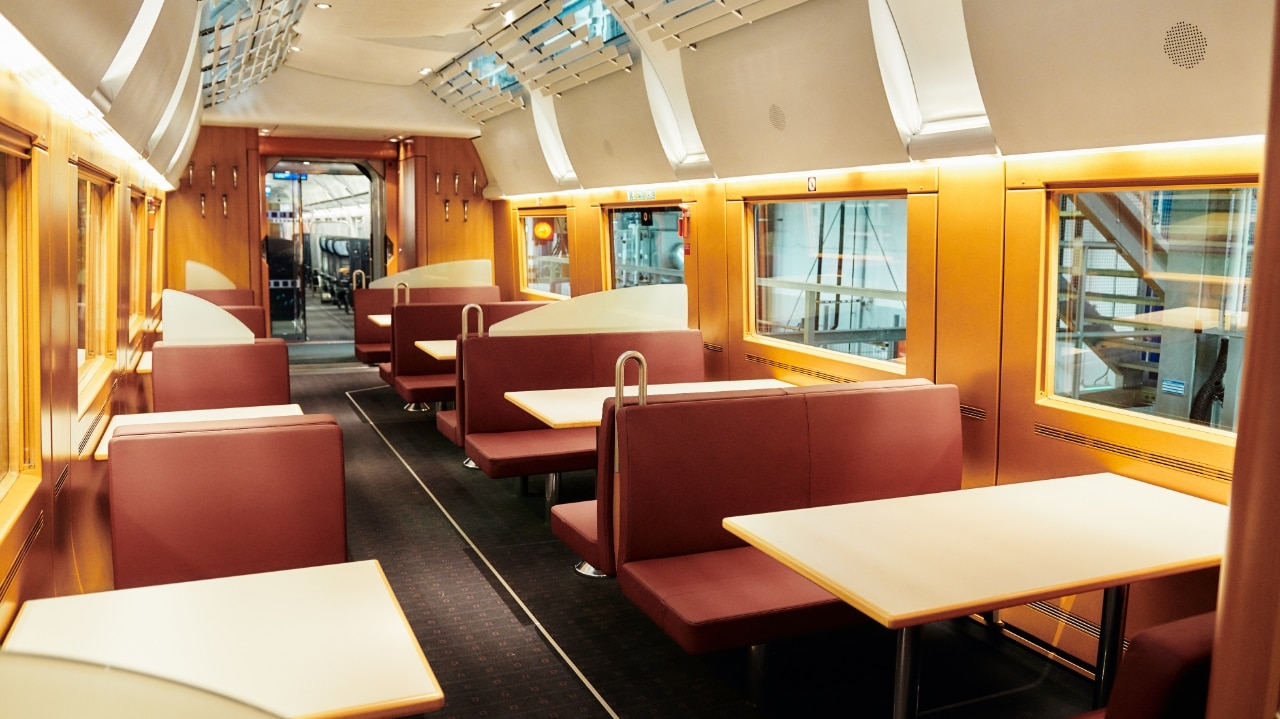ICE 1: The pioneer
The success story of the ICE began in June 1991.
On 2 June 1991, the high-speed age began in Germany with the introduction of the Intercity-Express or ICE. The ICE became synonymous with high speeds, fast journeys, excellent comfort and modern vehicle equipment. In the following years, the ICE grew in popularity, with a total of almost 60 trains on many connections. This was because it made journeys so much faster compared to travelling by car or flight. The high-tech icon boasted a wealth of comfort details such as air conditioning and underfloor heating.
This standard saw the ICE set the benchmark right from the start. The ICE 1 trains were redesigned between 2005 and 2008. The installation of slimmer seats increased the seating capacity by about ten per cent. In addition, the train formation of the individual multiple units was standardised. The redesign also saw the introduction of the typical ICE interior, as well as the addition of plug sockets at seats and the electronic seat display. The train featured a spacious family compartment, two wheelchair spaces and an additional wheelchair/pram space available on request.
Since 2020, the ICE 1 trains have been modernised further with additional technical and comfort features. Alongside improved passenger information through additional and enlarged passenger displays, the trains have more space for luggage and a comprehensively upgraded lavatory. In addition, the family compartment has been fitted with colourful carpets and decoration. An additional lift table for wheelchair users has been installed, giving the modernised train a total of three wheelchair spaces.
The ICE 1 fleet mainly operates on the high-demand north-south corridors. Thanks to the ETCS retrofit, they can also serve the new Halle/Leipzig-Erfurt and Erfurt-Munich high-speed lines.
ICE 1 |
ICE 1 modernised |
|
|---|---|---|
| Start of operations | 1991 | since 2020 |
| Number of trains | 40 | 18 |
| Number of carriages | 12 intermediate cars, 2 power cars | 9 intermediate cars, 2 power cars |
| Number of seats | 703 | 503 |
| Train length | 358 m | 279 m |
| Pull weight (empty) | 627 t | 627 t |
| Maximum speed | 280 km/h | 280 km/h |
| International operation | - | - |







